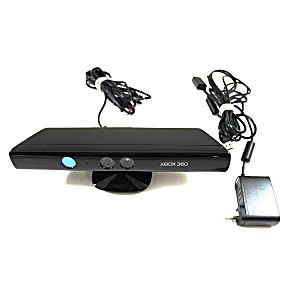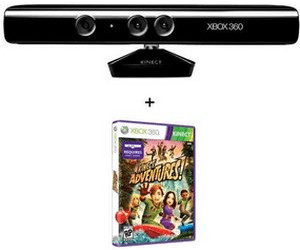

I have an original Xbox 360 Pro from launch date, and also happen to use the Xbox dual band 802.11N adapter to connect wirelessly. Remember that unlike the Xbox 360 S, the older Xbox 360 has just one USB port on the rear, and two in the front.

For that, you get a power supply cable which breaks off into a Y connector - one end is orange tipped and connects to the cable coming out of the Kinect, the other goes into your original-gen Xbox 360.īut wait, what about that odd-looking grey cable?

The rest of the cables are for if you’re connecting the Kinect to an older generation Xbox 360. The cable physically looks like USB, but the connector inside is visibly different besides the obvious shape difference. If you’ve got an Xbox 360 S, this is the only cable you need to use Kinect. This cable is keyed differently than a normal USB cable and allows the Kinect to draw power from the console itself instead of requiring a standalone power supply. Inside the box is the Kinect sensor itself, Kinect Adventures, and a suite of cables.įirst up is an orange-tipped USB-like cable with a special connector for connecting the Kinect to the Xbox 360 S. The Kinect is securely seated in a foam recessed area. There’s an unboxing gallery below in case you want to see for yourself.
Kinect 360 free#
On the box, Microsoft stipulates that you need at least 6’ of free space in front of the sensor to play, which seems a bit optimistic as I’ll show later. Packaging for the standalone Kinect package matches the style of the Xbox 360 S packaging - it’s a lot of green and purple. We purchased a retail kit on launch date, which comes with the sensor itself, cables, some paperwork, and Kinect Adventures.
Kinect 360 install#
The result is that there’s only one thing to purchase to add Kinect to an existing Xbox 360 install - the $149.99 Kinect sensor itself. Instead of relying on handheld controllers and motion targets, the Kinect uses a purely optical solution which we’ll get to in a bit. We’ve spent nearly a month playing with Kinect and are finally ready to release our impressions.įirst off, the Kinect is fundamentally different from Sony and Nintendo’s offerings.
Kinect 360 software#
It’s taken the greater part of four years (and one name change) for the software giant’s answer to make it to market, but Kinect is finally out and ready for mass consumption. Flash forward to late 2010, and Microsoft and Sony both have readied their response to the Wii - the Microsoft Kinect and Sony Move, respectively. The motion-controlled Wii has enjoyed a nice long run being the sole platform for motion-assisted gaming. Nintendo was first to the block in 2006 with 3D motion-controlled user interfaces, leveraging a unique combination of IR sensors and 6-axis MEMS accelerometers in a handheld remote. White sperm whale discovered in waters near Jamaica - Newofmax on Leucism vs.For better or worse, new user interface is all the rage right now in the console gaming scene.Author Science Made Fun! Posted on DecemDecemCategories Uncategorized Tags 3D game, camera, kinect, motion sensor, new video game, new xbox, science, video game, x-box, xbox 360 When Kinect monitors two people and performs its motion analysis, it’s able to extract detailed information including recognition of up to 20 joints for each player right down to individual fingers in certain instances.įor more on the X-BOX Kinect- check out these stories online: In simpler terms it means that while it may be able to recognize six people at once it’s really only designed for two people to be playing games through it. When the depth sensor and RGB camera work together it allows Kinect to track up to six people passively and two people for actual motion analysis. It’s very similar to a bat’s use of echolocation in navigating the environment despite having poor eyesight Data, including the amount of light reflected back as well as the time it takes the laser to return to Kinect, is compiled to compose a 3D map of the room. The way the depth sensor works is by firing an infrared laser into the room and subsequently using an image sensor to gather information upon the reflection of the infrared beams. While we all might have an idea of how an ordinary camera works, the idea of a depth sensor is definitely out of the ordinary. The two stars of the show are the depth sensor and RGB camera. Furthermore, Kinect connects to its base on a motorized pivot which allows for a certain degree of movement Where a camera can merely track movements in two dimensional space, Kinect can track movement in three dimensions and perform facial and voice recognition. What sets Kinect apart is that it also incorporates a depth sensor and multi-directional microphone array to create a plethora of additional features and functionality. At first glance, Kinect looks like an overly wide webcam and indeed an RGB camera is one of its components. The new XBOX 360 Kinect is a game-changer when it comes to how we play our games.


 0 kommentar(er)
0 kommentar(er)
